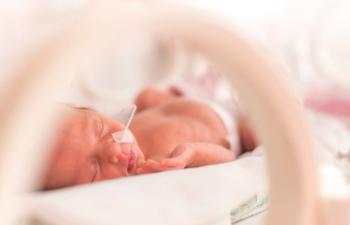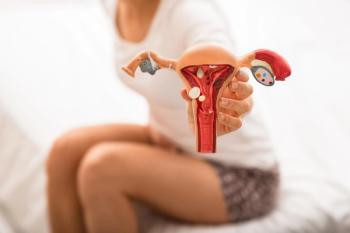
August Case Summaries
Preterm delivery results in cerebral palsy
In 1990, a 29-year-old New York woman with a history of diabetes and preterm delivery was admitted to the hospital at 20 weeks' gestation with mild-to-moderate contractions. Magnesium sulfate was ineffective in stopping the contractions and an infant was delivered with Apgars of 4 and 4. She was intubated for 4 days and discharged at 3 months with a diagnosis of periventricular leukomalacia. The child has no use of her legs and little use of her right arm. She requires a wheelchair and cannot attend to her daily needs but has full cognition and above-average intelligence and was doing well in school.
The child's mother sued the hospital and physician involved in the delivery, claiming that antibiotics should have been given because infection is a known cause of preterm labor and that the hospital and obstetrician improperly reduced the magnesium sulfate, allowing her labor to progress. She also claimed that the doctors and nurses failed to recognize the fetal heart rate tracings, which showed variable decelerations and reduced variability that required cesarean delivery, and the failures resulted in cerebral palsy and brain damage.
Legal Perspective
In this case, the woman entered into a "high/low" agreement. That is, had the jury found for the plaintiff, she would have received a previously agreed upon "high" award regardless of the amount actually chosen by the jury, and if the verdict was for the defense, the defendant would have paid the plaintiff the "low" amount. The high/low agreement here applied only to the hospital, which agreed after the verdict to pay the plaintiff $5 million. Because the physician did not make a similar agreement with the plaintiff, he will be responsible for 65% of the $29.3 million award the jury found was his fault.
Excessive traction blamed for Erb's palsy
In 2002, a shoulder dystocia was encountered during a California woman's vaginal delivery. The infant was born with a severely injured right shoulder and arm and was diagnosed with Erb's palsy.
In the lawsuit that followed, the woman claimed that when the shoulder became trapped, excessive traction was applied to the baby's head, tearing the nerves that enervate the arm and shoulder. She claimed that maneuvers to free the shoulders should have been used, which would have resulted in a delivery with no injuries.
The obstetrician argued that the injury was caused by natural forces present within the mother's uterus. A $500,000 settlement was reached.
Brain damage after uterine rupture
In 1996, a New York woman delivered her first child by cesarean for cephalopelvic disproportion (CPD). When the woman became pregnant again the next year, she was once again managed by the same practice. Her treating obstetricians felt that she could attempt a vaginal birth after cesarean. About 2 hours after admission for delivery, the patient was 5-cm dilated and artificial rupture of membranes was performed.
Several hours later, the baby's head was not descending properly and dilatation had not progressed. Oxytocin was started and the woman reached full dilation about 3 hours later. Labor did not progress, however, and at 13 hours after admission, the fetal heart rate (FHR) monitor was recording variable decelerations and tachycardia. After an unsuccessful vacuum extraction, the patient said she was exhausted and had shoulder pain, and a C/S was ordered.
The attending physician called another doctor to assist and the baby was born about an hour later. Emergency resuscitation was required and brain damage was quickly diagnosed. The baby was found to have sustained hypoxic ischemic encephalopathy from asphyxia caused by a uterine rupture. The child suffers from cerebral palsy of the spastic quadriplegia type, requires tube feeding, and is totally dependent, although his cognitive function is intact.
Newsletter
Get the latest clinical updates, case studies, and expert commentary in obstetric and gynecologic care. Sign up now to stay informed.










